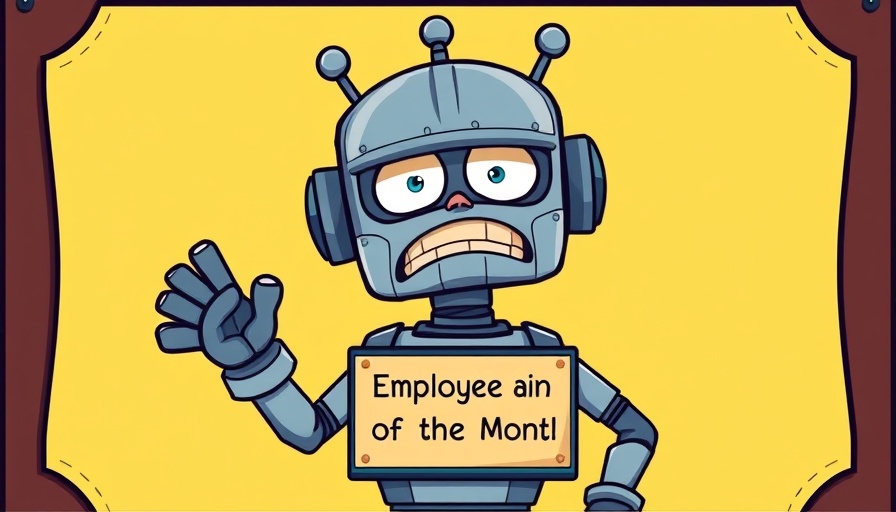
Understanding AI's Growing Impact on Employment
Searching for an answer to the question, "Whose job is safe from AI?" is becoming increasingly relevant as advances in artificial intelligence shape the labor market. Recent studies indicate that sectors such as data entry, manufacturing, and even legal professions may face significant disruption due to this technology. However, it is important to remember that while AI has the potential to take over routine tasks, it also creates new opportunities that demand entirely different skills, making it crucial for today's workforce to adapt.
The Role of Emotional Intelligence
Jobs that rely heavily on emotional intelligence and human interaction, such as nursing, therapy, and creative professions are less likely to be threatened by AI. As a Bay Area entrepreneur noted, the human touch cannot easily be replicated by machines. Emotional connectivity and personal understanding remain distinctively human traits, essential in fields requiring deep interpersonal skills. In today's rapidly changing job landscape, professionals must hone these uniquely human abilities to remain competitive.
Skills for the Future Workforce
To prepare for the evolving job market, individuals must focus on developing skills that complement AI rather than compete with it. Skills in data analysis, critical thinking, and digital literacy are becoming essential in the workplace. For instance, those involved in Silicon Valley startups are actively pursuing education in technology and analytics to remain relevant. Furthermore, fostering a growth mindset will allow workers to easily transition into industries affected by AI.
Sector-Specific Resilience
Different sectors will react distinctively to AI disruption. Creative industries such as marketing and content creation may see a shift towards leveraging AI tools for efficiency, yet the need for human creativity remains. Conversely, jobs characterized by repetitive tasks, particularly in manufacturing and clerical work, are at greater risk. Understanding the nuances of these sectors can help both employees and employers align their strategies with future trends.
Predicting Future Trends in Employment
Experts suggest we're only beginning to understand AI's potential impact on job security. A balanced approach to integrating AI into businesses can lead to more efficient practices without significant job loss. Integrating AI into workflows may involve companies enhancing employee roles with AI tools rather than fully replacing them, thus creating a collaborative relationship between human workers and machines.
Conclusion: Adapting to Change
The key takeaway in understanding AI's implications on our jobs is adaptability. Those who embrace ongoing learning and flexibility will be best positioned to navigate this changing landscape. As we venture further into the age of digital transformation, both employees and employers have a shared responsibility to prepare for the workforce of the future. Embracing AI as a complementary tool rather than a formidable adversary can yield benefits that extend beyond simple cost savings.
By cultivating skills aligned with market demands, an awareness of sector specifics, and a commitment to professional growth, we can find security in our employment even amidst disruptive technologies. To stay informed and discover opportunities within the shifting landscape, keep an eye on new regional business updates, entrepreneurial stories, and insights from industry leaders.
 Add Row
Add Row  Add
Add 



Write A Comment